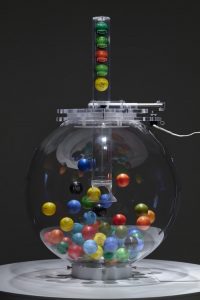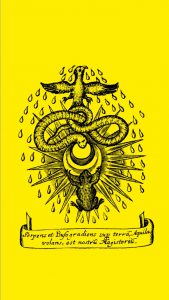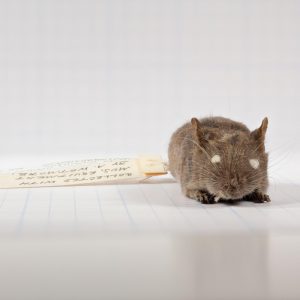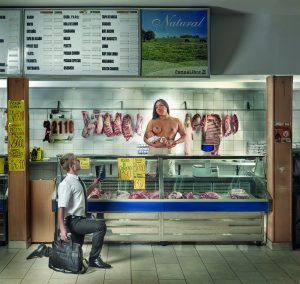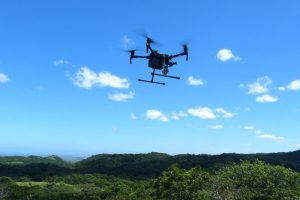From Rai stones to Pet Rock, handaxes to rock ‘flour’, bezoars to plastiglomerates, rocks of all sizes and values have long played a role in human cultures. They might look boring and, in most cases, have humble financial worth, but rocks reveal fascinating stories about the world and how humans shape its geological evolution.
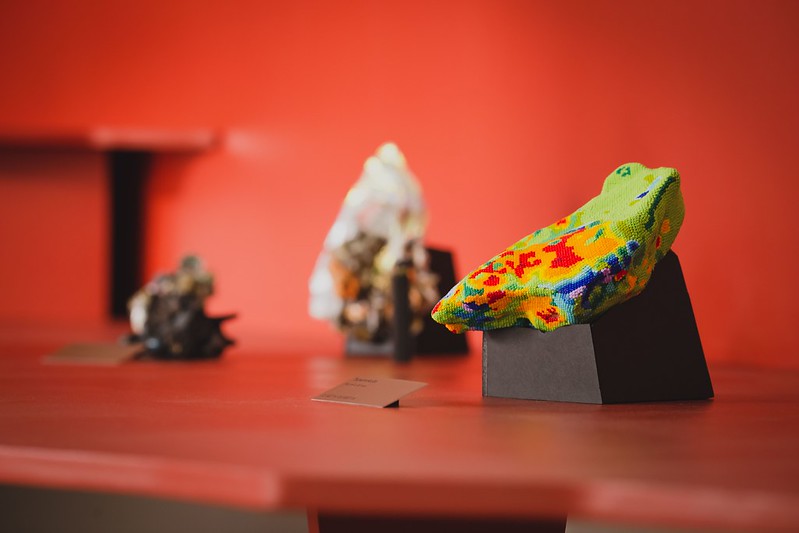
NEO MINERALIA, exhibition view. Credit: Benjamin Roberts. Center for Crafts
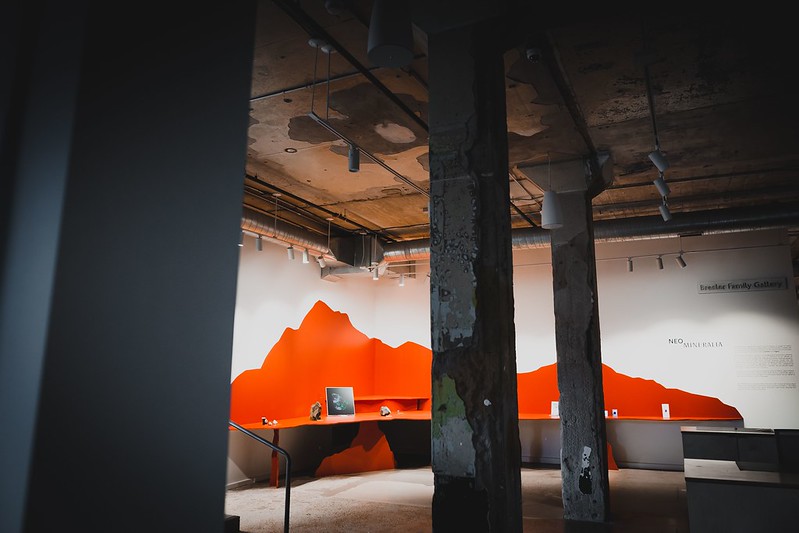
NEO MINERALIA, exhibition view. Credit: Benjamin Roberts. Center for Crafts
NEO MINERALIA, a show curated by Oscar Salguero, postulates that recent rock formations no longer fit within the traditional types: Igneous, Metamorphic and Sedimentary. Instead, he believes, the Anthropocene has introduced two post-natural geological specimens: Synthetic and Digital.
NEO MINERALIA presents new geological specimens crafted by artists exploring rocks as reflections of our effects on human and nonhuman ecologies. By embedding synthetic materials (plastics, e-waste) and layers of data points (critical, financial, social) into the craftsmanship of these artifacts, the artists transgress the definition of rocks, turning them from passive aggregates of minerals into metaphorical aggregates of data. Within their apparent “rockness” we can decode hopes, warnings, and speculative future scenarios.
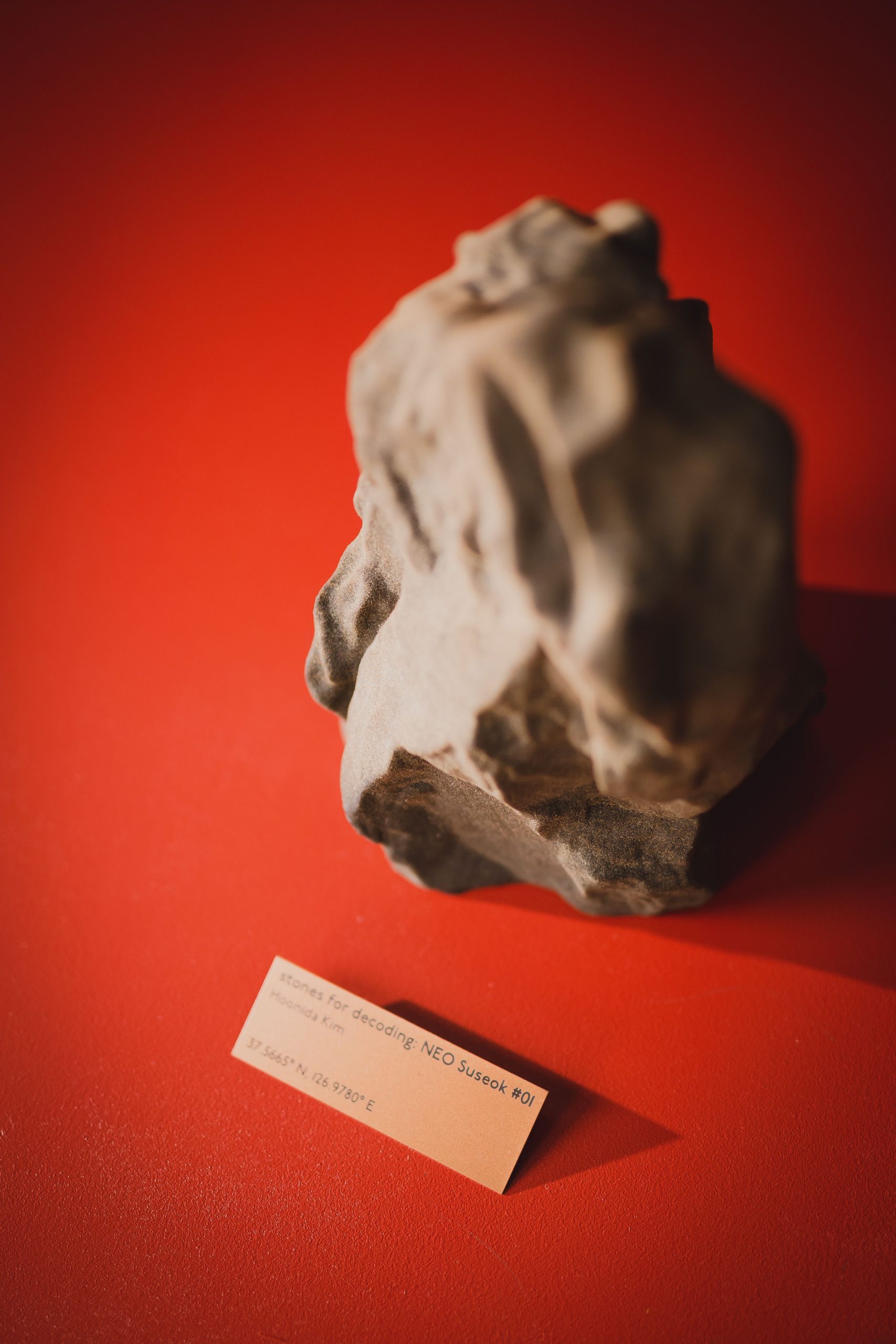
NEO MINERALIA, exhibition view. Credit: Benjamin Roberts. Center for Crafts
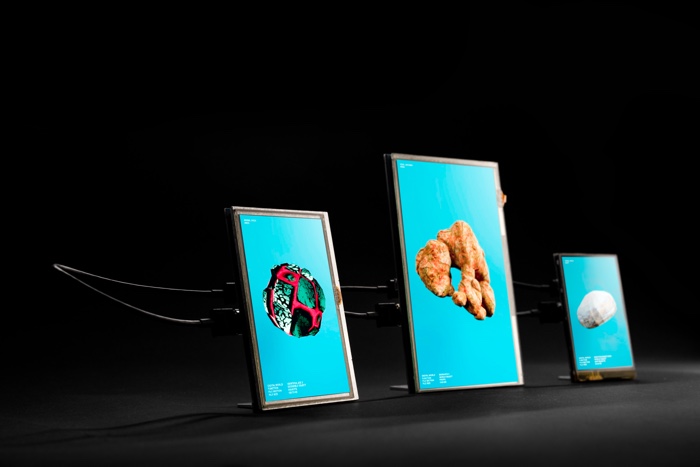
NEO MINERALIA, exhibition view. Credit: Benjamin Roberts. Center for Crafts
Oscar Salguero is a researcher, critical designer and independent book curator. His Antilibrary research project looks closely at artists’ books to identify atypical trends and future attitudes. Salguero is also the founder of Interspecies Library and the author of the Symbiocene Anthology.
I interviewed Oscar 2 years ago about Interspecies Futures [IF], a show about artists books that mix speculative fiction and new interspecies possibilities. At the time, I was impressed by his vision on the roles that books and libraries can play in helping us appreciate and engage with the more-than-human worlds. By helping us identify the wonders of the more than organic world, NEO MINERALIA ventures into unchartered (and even more innovative) territory. Hence my desire to interview him again:
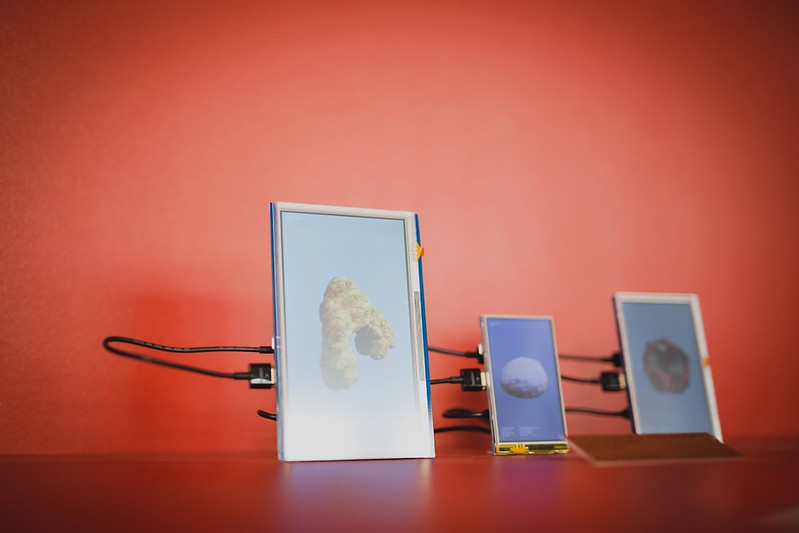
NEO MINERALIA, exhibition view. Credit: Benjamin Roberts. Center for Crafts
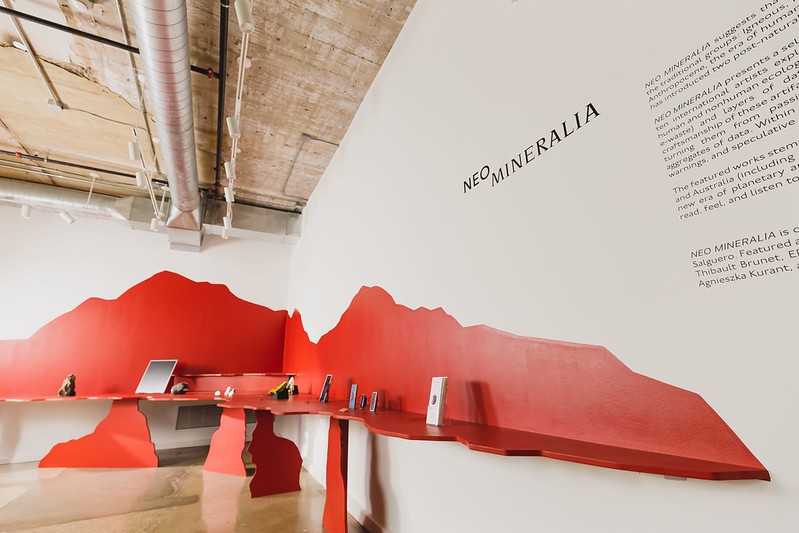
NEO MINERALIA, exhibition view. Credit: Benjamin Roberts. Center for Crafts
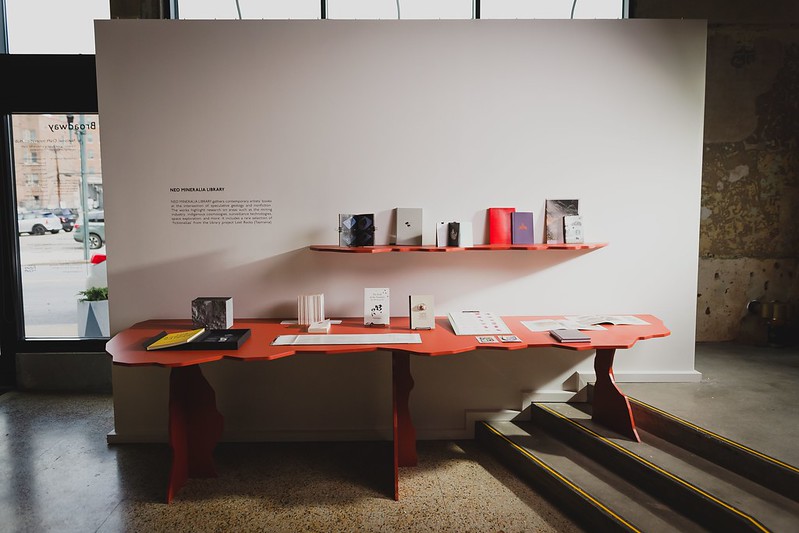
NEO MINERALIA, exhibition view. Credit: Benjamin Roberts. Center for Crafts
Hi Oscar! The last time we talked, you shared your research on interspecies and alternative human-nonhuman scenarios. How did you go from there to the rocks? What inspired this project?
Interestingly, rocks can be considered nonhuman entities as well (nonliving). My interest in rocks has been ongoing and parallel to my interspecies-related research. In fact, it goes further back. When I was about 10 years old, I remember finding a small box of mineral samples at my father’s home office in Lima, Peru. Imagine encountering those little tiny, beautiful, iridescent rocks whose origins and composition were described in detail but whose presence was nonetheless enigmatic. Like most younger people, I was familiar with the idea of a rock but I didn’t understand the forces and energies that can cause these geological specimens not only to form, in the first place, but to be sitting in my hands.
This was a dormant experience that recently surfaced as I began to notice an increasing number of contemporary artists turning to rocks as artifacts of interest, especially in the last decade.
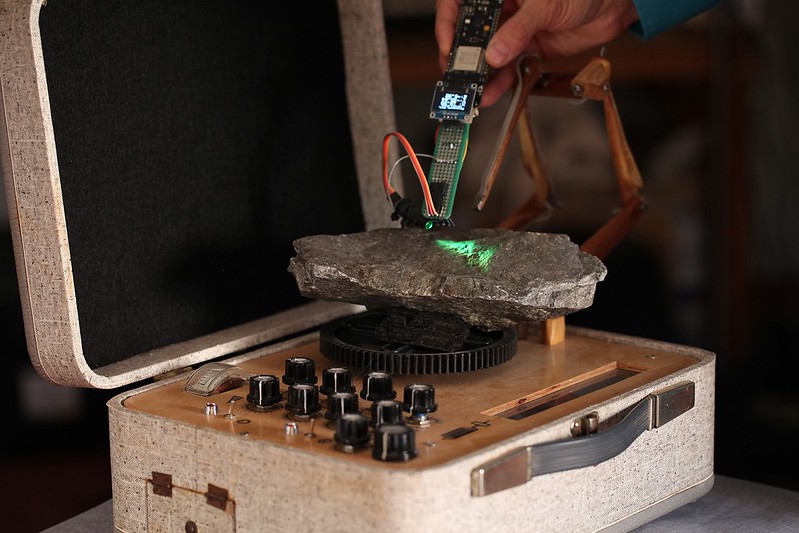
Marcela Armas, Tsinemakuta, 2016-2021
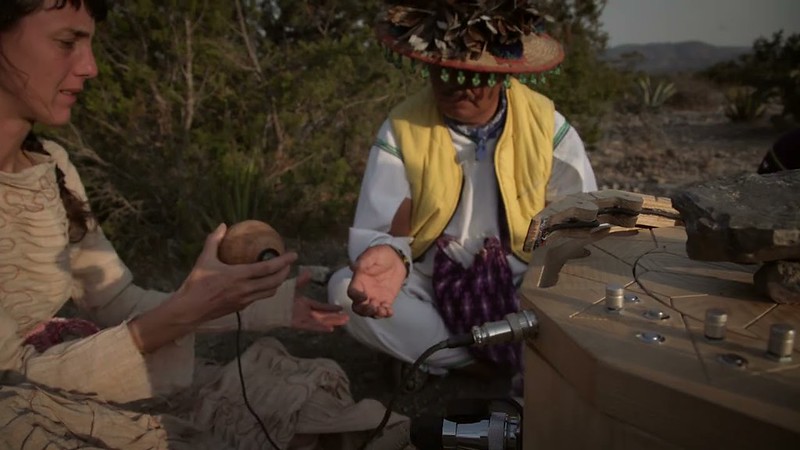
Marcela Armas, Tsinemakuta, 2016-2021
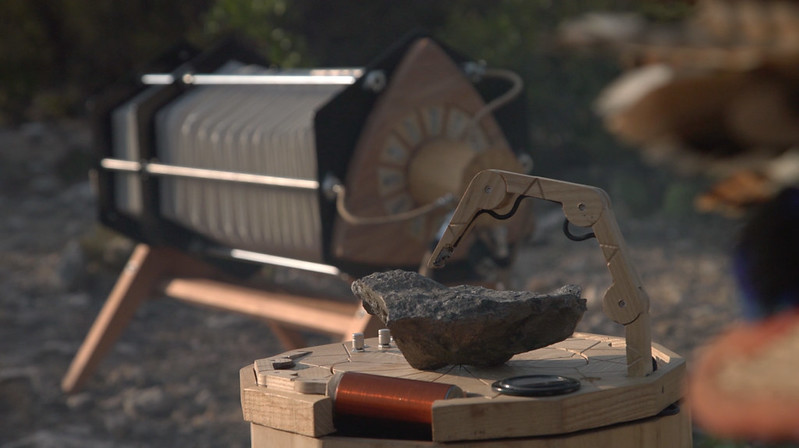
Marcela Armas, Tsinemakuta, 2016-2021
Marcela Armas, Tsinemakuta, 2016-2021
I was particularly intrigued by Marcela Armas’ work Tsinemakuta. Can you tell us the story of that magnificent stone?
Marcela Armas is a Mexican artist whose work I first noticed at “Common Frequencies” (2021) a show curated by Elisa Gutiérrez Eriksen at BioBAT Art Space in Brooklyn, NY. The exhibition focused on Mexican artists exploring sonic dimensions of more-than-human realms. Marcela’s rock had a mesmerizing impression on me. It sat there silent, beautiful and solemn. Tsinamekuta is a rock covered in tiny colorful beads, following an indigenous Wixárika beading technique. Its patterns represent the magnetic memory maps of pyrrhotite, a ferrous sulfide known for its sensitivity to magnetism, that can be found in San Luis Potosí, Mexico. In the last 150 years this area has been affected by ongoing mining operations due to the presence of copper, gold and silver. As a consequence, both the local ecology and the sacred connection between the rural communities and their land (a relationship that goes back 10,000 years) have been severely disrupted.
There is a mystical sonic component to this rock, which results from Marcela meeting representatives of the community and offering them to honor a specimen of pyrrhotite mineral by introducing a new memory to it via magnetic induction. This transmitted signal, produced with the help of an instrument she developed, is the sound of the heartbeats of Marcela and Mara’akena Jairra, a Wixárika member.
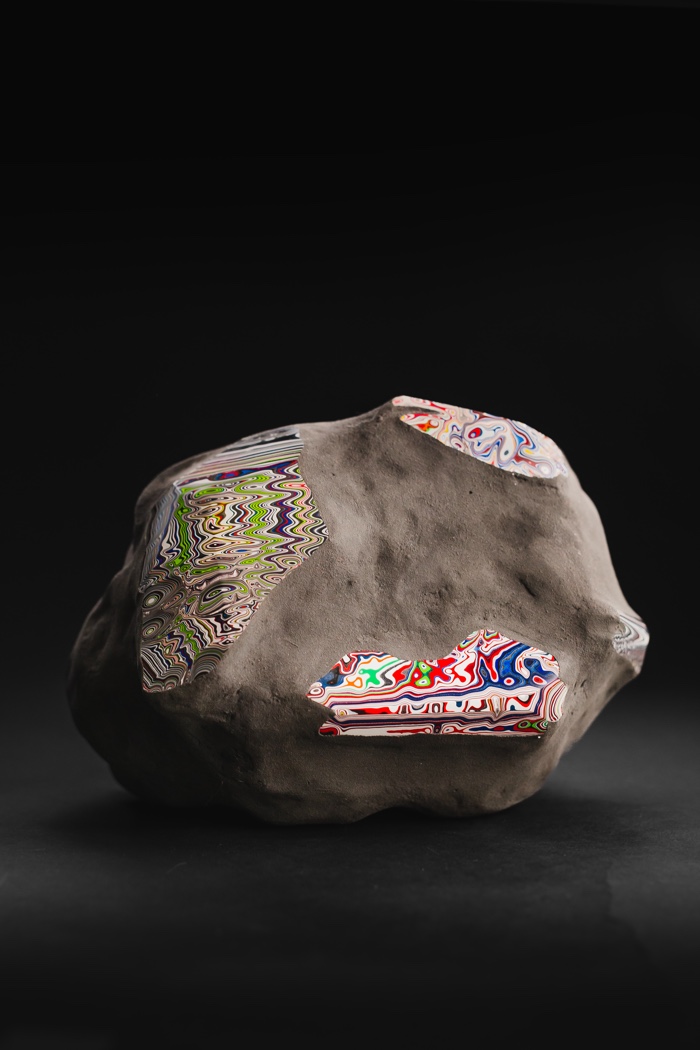
Agnieszka Kurant, Post-Fordite, 2022
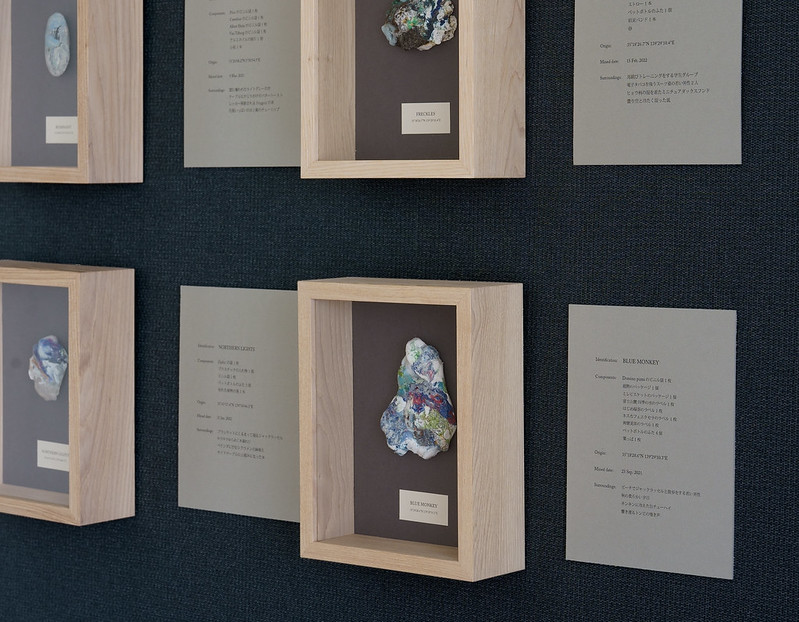
Sae Honda, Yoro, Kumoma, Futs, Halo, 2016-21
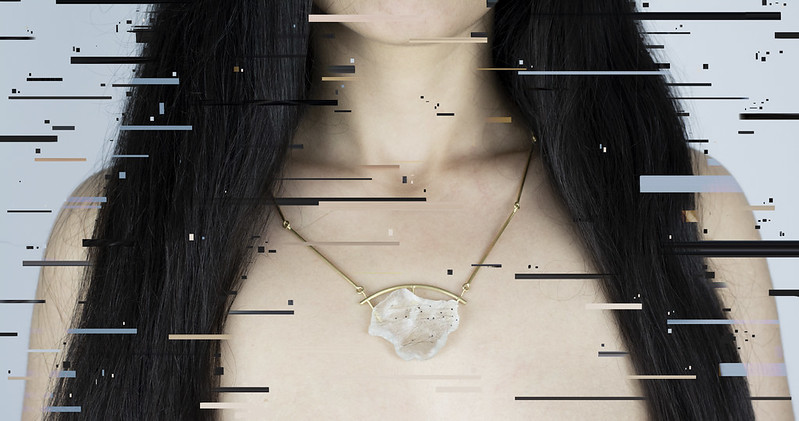
Meristema Lab, 3020, 2020-22
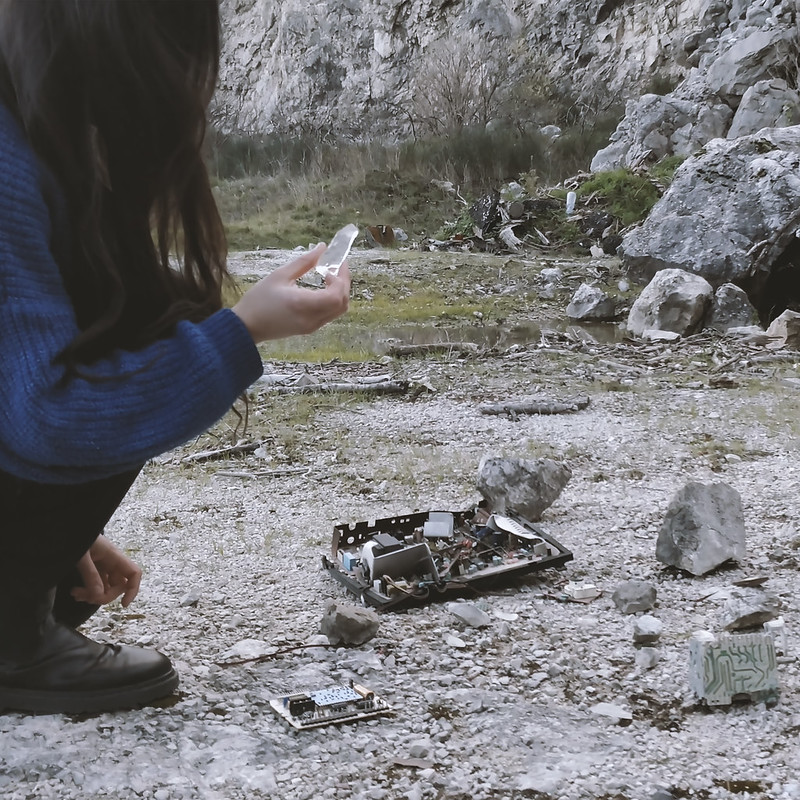
Meristema Lab, 3020, 2020-22
Some of the rocks on show are using some form or other of plastic. Or components of e-waste. Or else remains of industrial processes. Does that mean that the artists who made these rocks want to convey a dark view on what humanity is doing to this planet? Or should their gestures be interpreted differently?
NEO MINERALIA is an exercise in imagining an exhibition as a scientific proposal. As you enter the space, you encounter the following statement: “NEO MINERALIA suggests that recent rock formations no longer fit within the traditional groups: Igneous, Metamorphic, and Sedimentary. Instead, the Anthropocene, the era of human influence on the climate and environment, has introduced two post-natural rocks: Synthetic and Digital.”
Since 2006, first in Hawaii and later in many parts of the world, plastiglomerates or rocks that contain remnants of plastics in them have been found and identified by geologists. Interestingly, one of the three people who coined the term plastiglomerate is Canadian artist Kelly Jazvac. I believe artists are constantly operating at the forefront of new knowledge and paradigms. This intuition led me to pay attention to the works of contemporary works imagining future stones.
“Synthetic rocks”, as I describe in the show, are hybrid rocks that contain natural and human-manufactured matter (e-waste, plastic, etc). For example, Post-Fordite (2022), a rock created by Polish artist Agnieszka Kurant, imagines a reality in which decades of accumulation of enamel paint in the floors of defunct car factories gives place to new geological formations. Another work, “3020” (2020-22) by Meristema Lab (a project by Italian craftsperson Annarita Bianco), presents a series of artifacts that inhabit an alternative scenario, 1000 years into the future, in which e-waste (discarded cables or memory cards) has become a precious and desirable matter. In a more poetic way, Japanese jewelry maker, Sae Honda, produced a series of rocks, Yoro, Kumoma, Futs, Halo (2016-21), entirely composed of discarded matter, such as polypropylene bottle caps, plastic bags or packaging, that she finds in her visits to different cities of the world.
By manifesting hypothetical rocks fossilized with human altered matter, these artists are attempting to visualize the material legacy and residues of a species who in the last few hundred years of uncontrollable extraction introduced a series of contaminants and agents that have altered entire ecosystems at a planetary scale. There is concern, wonder, and mystery in these investigations, but above all I appreciate their extreme long term vision.
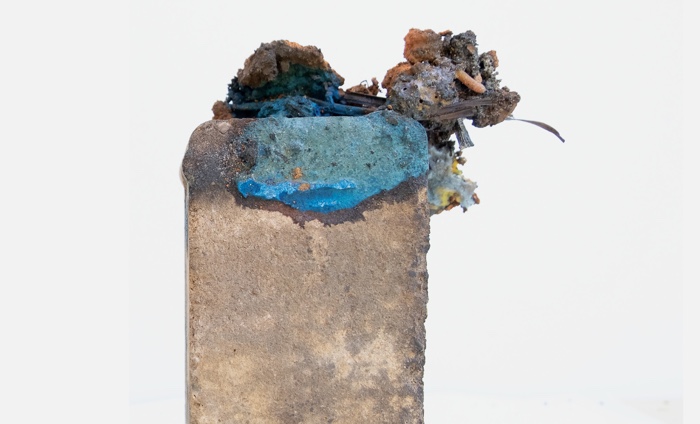
Silvia Noronha, Shifting Geologies, 2020-ongoing
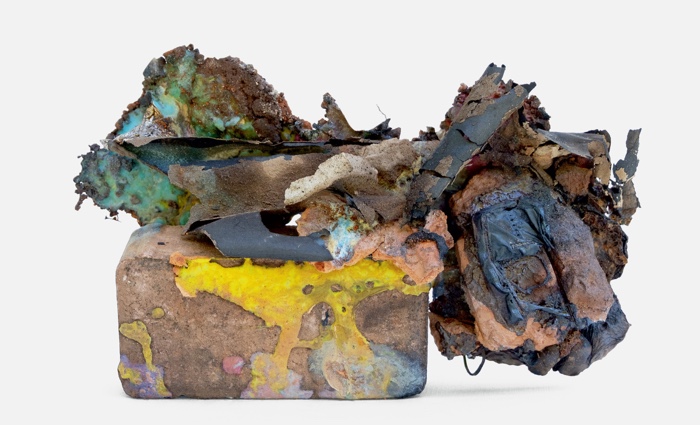
Silvia Noronha, Shifting Geologies, 2020-ongoing
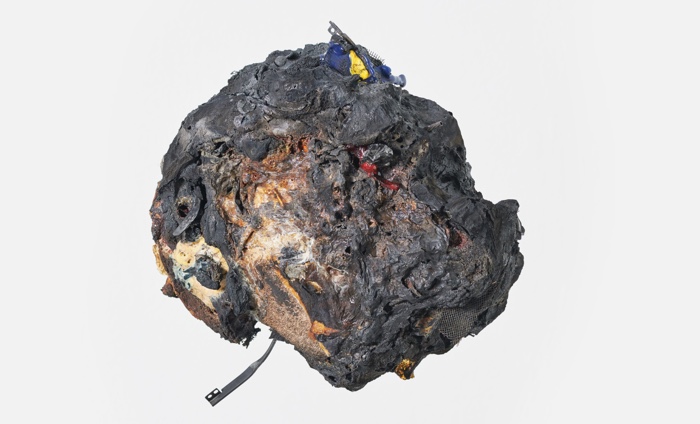
Silvia Noronha, Shifting Geologies, 2020-ongoing
Rocks are usually associated with deep time. Some of the rocks in your selection seem to speed up the time it takes for a new type of rock to form. Can you tell us something about the time scale and time relationship of the rocks exhibited?
A quote I enjoy by Timothy Morton and which I included in the catalog of the show is the following: “On an inhumanly large timescale, rocks behave like liquids, coming and going, moving, shifting, melting. Rocks fail to sit there doing nothing.” To a degree, our connection to rock predates any historical records and will likely evolve in ways we cannot foresee.
It’s fascinating how deeply evocative rocks can be. I remember a beautiful children’s book I came across a few years ago titled Everybody Needs a Rock (1974) by American novelist Byrd Baylor. The story playfully suggests ten rules for finding the perfect rock, listing characteristics like size, color, weight, and even the way it “looks” at you. Rule number nine is memorable: “Always sniff a rock. Rocks have their own smells. Some kids can tell by sniffing whether a rock came from the middle of the earth or from an ocean or from a mountain where wind and sun touched it every day for a million years.”
I believe the artists I highlight at NEO MINERALIA are, in some way, motivated by a similar prospect: a metaphorical, multisensorial encounter of some future entity with these speculative rocks. In fact, when I imagined the exhibition I thought of it as a fictional hall of geological specimens (including metal plaques highlighting the coordinates of each rock). The idea of acceleration in these works is fascinating. Brazilian artist Silvia Noronha’s Shifting Geologies (2020-22) is a great example. She combines soil samples and waste (electronics, building debris and plastics) in order to mimic how natural forces will play a role in fusing these materials in the formation of new rocks.
I think that in the far future it may no longer matter whether these rock-specimens attempted to embody dystopian or utopian scenarios, instead they may become quiet archives, storage artifacts of events, disruptions, matter from both human and nonhuman origin.
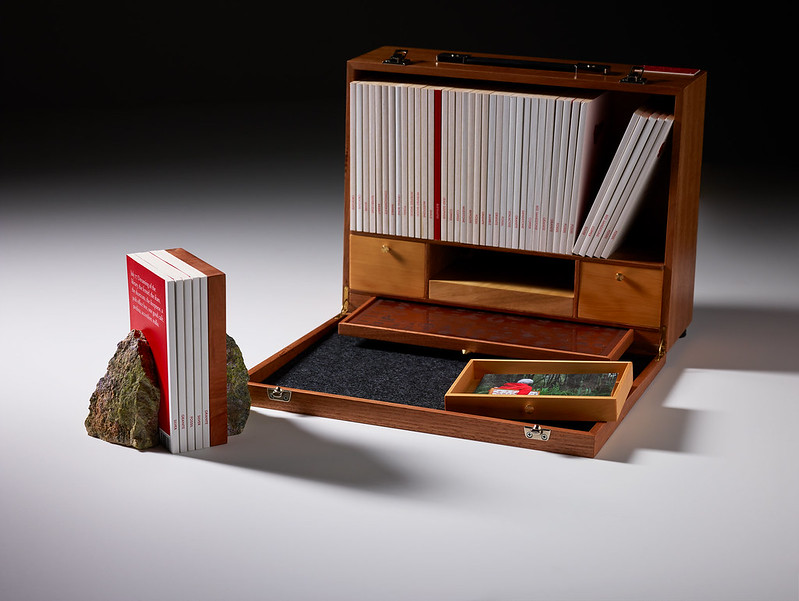
Justy Phillips and Margaret Woodward, Lost Rocks Library >, 2017-21
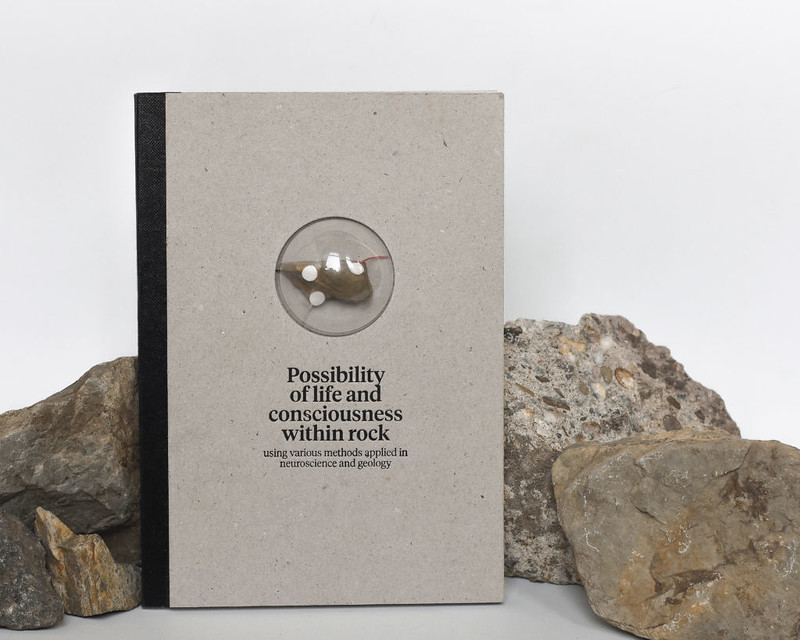
Zoë Sluijs, Possibility of Life and Consciousness Within Rock, 2019
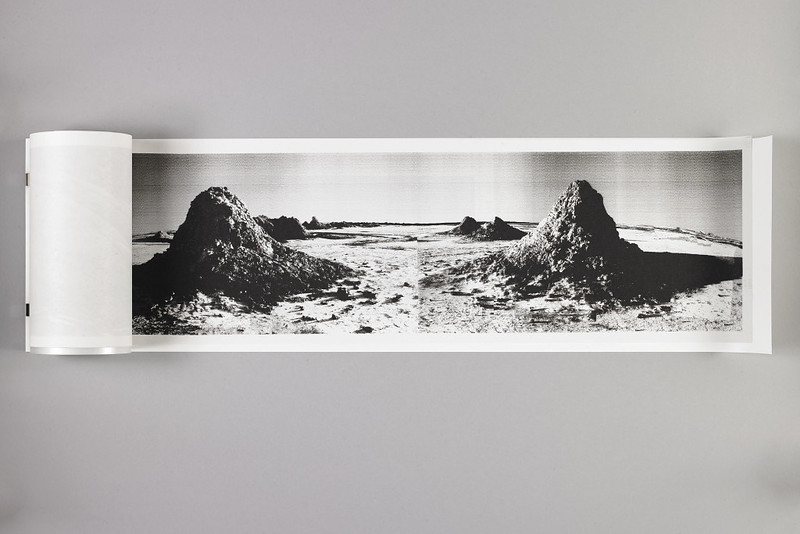
Lucy Helton, Transmission, 2015
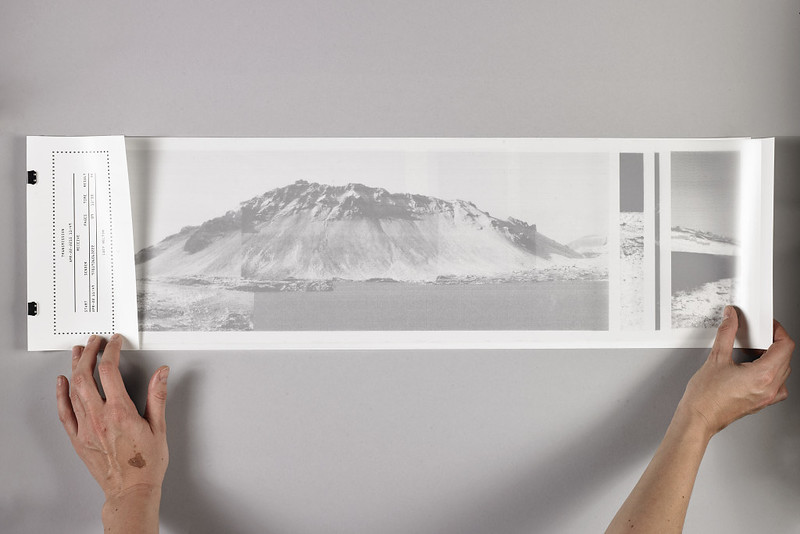
Lucy Helton, Transmission, 2015
Can you give us some of the highlights of the Neo Mineralia Library? (and as a curiosity: what is the book in the photo i’m attaching? arsenic eating is quite intriguing)
NEO MINERALIA Library is the research ‘branch’ of this curatorial project. As an ongoing collection, it focuses on the study of the evolution of 21st century geological consciousness through printed documents produced by artists. Some of the books include:
Transmission (Silas Finch, 2015) by British photographer Lucy Helton: A scroll depicting imaginary desolate landscapes (mountains, soil) inspired by a sci-fi story by Helton’s father who proposed a future where Earth becomes a wildlife preserve, without humans.
Possibility of Life and Consciousness Within Rock (Self-published, 2019) by Dutch photographer Zoë Sluijs: A fictional account of a 1990s scientific expedition in West Yorkshire, UK, attempting to bridge the fields of geology and neuroscience.
Lost Rocks Library (A Published Event, 2017-21) by Justy Phillips and Margaret Woodward from Tasmania: A series of 43 “fictionellas” by 46 artists exploring metaphysical and mineralogical relationships with rocks.
Also included are some books produced by independent publishers, such as The Arsenic Eaters (The Eriskay Connection, 2018) by Austrian artist Simon Brugner, a look into the culture of pre-20th century ‘poison eaters’ in the Austrian Alps who consumed arsenic mineral as it was believed to give them strength and sexual potency.
Red dominates the scenography of the exhibition. What guided the choice of color?
Initially, I considered red purely from a chromatic perspective as it happened to be a great neutral background against the tonalities, textures, and colors of the rocks displayed. However, as the design of the exhibition evolved, I came across North Carolina’s red clay which is a particular type of red clay soil originally of the state (heavily used in ceramics and local crafts). Since NEO MINERALIA was taking place in Asheville, NC, the final red choice felt more intentional and contextualized.
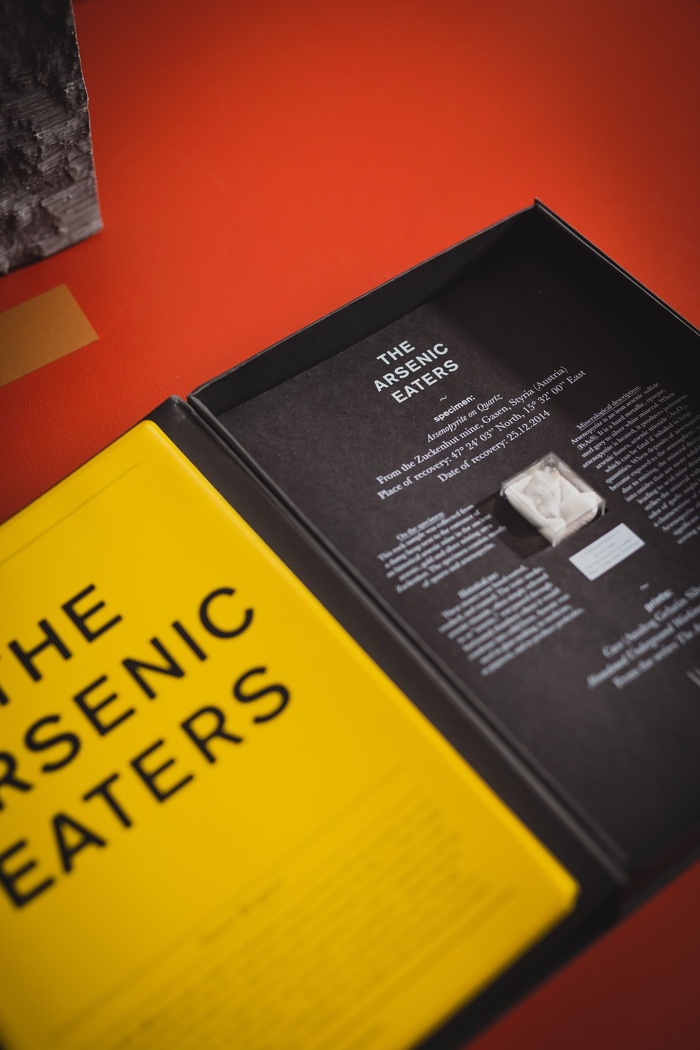
NEO MINERALIA, exhibition view. Credit: Benjamin Roberts. Center for Crafts
I know you always have so many ideas. Are you already working on other projects and fields of research?
These days I am looking for funding for the development of the Interspecies Library Online Index. If successful, this will be the first comprehensive catalog of artists’ books and artistic research documents produced in the 21st century dedicated to exploring alternative interspecies futures. I have a very specific vision for it but I need financial support to produce it. Functionally, the archive will mimic an organism.
I am also developing a concept I call ‘Print Fiction’, or the manifestation of printed books as artifacts from alternative realities. An interesting example of this phenomenon is the book “Virophilia” (Self-published, 2018) by Taiwanese bioartist Pei-Ying Lin. This conceptual cookbook was produced two years before the COVID-19 pandemic and it predicted a future in which viruses will be more commonly included in our diets (from the perspective of a 22nd century researcher). Hopefully, the results of this ongoing study on books will become the basis for a publication in the near future.
Finally, I am really fascinated by the possibilities of AI and the decoding of nonhuman languages, anything from poetic interpretations of interspecies signals to cutting edge research in the fields of chiropteran (bat) or cetacean (whale) communication. I believe this is the next frontier in terms of understanding the true extent and complexity of planetary intelligence. If we can ever decode/unlock these messages, then we may be able to attempt to move to the next level: atomic or cosmic intelligence. Though we may still be generations away from that moment, the fact that our species is attempting to achieve this milestone is already a miracle.
Thanks Oscar!
NEO MINERALIA, curated by Oscar Salguero, remains open until 28 October 2023 at the Center for Craft in Asheville, North Carolina.
Previously: The Antilibrary: artists’ books and our bizarre future.

